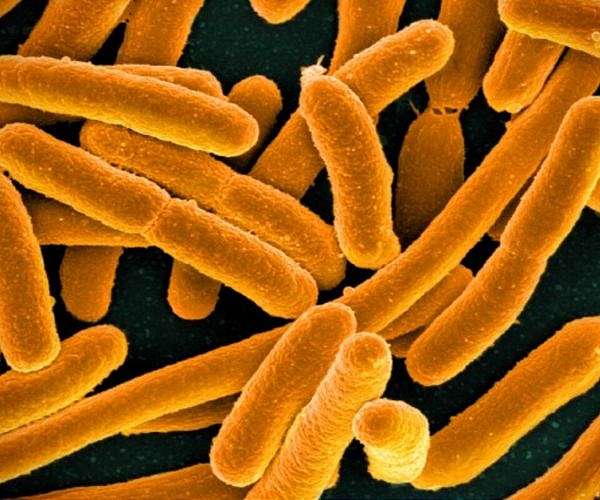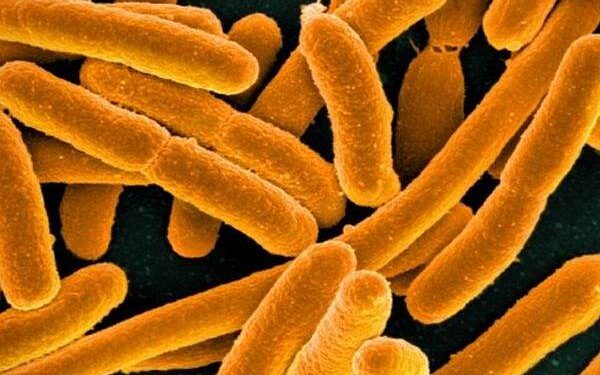
Rocket test proves bacteria survive space launch and re-entry unharmed
by RMIT Staff Writers
Melbourne, Australia (SPX) Oct 07, 2025
A world-first study has proven microbes essential for human health can survive the extreme forces of space launch.
Space agencies are planning to send crews to Mars within decades but sustaining life on the red planet would be more difficult if important bacteria die during the flight.
Now an Australian-led study has found the spores of Bacilus subtilis, a bacterium essential for human health, can survive rapid acceleration, short-duration microgravity and rapid deceleration.
The spores of bacteria were launched high into the sky, then studied once their rocket fell back to earth, in what is believed to be the first study of its kind in real conditions outside the lab.
Study co-author Distinguished Professor Elena Ivanova from RMIT University said the findings add to our overall understanding of how living organisms respond to the unique environment of space.
“Our research showed an important type of bacteria for our health can withstand rapid gravity changes, acceleration and deacceleration,” Ivanova said.
“It’s broadened our understanding on the effects of long-term spaceflight on microorganisms that live in our bodies and keep us healthy.
“This means we can design better life support systems for astronauts to keep them healthy during long missions.
“Researchers and pharmaceutical companies can also use this data to conduct innovative life science experiments in microgravity.”
Although humans have been living on board space stations for short stints since the 1970s, bacteria like B. subtilis are important to sustain healthy human life over decades, which will be needed for a future Mars colony. B. subtilis bacteria contribute towards support the immune system, gut health and blood circulation.
The test
For the study, researchers blasted the spores to the edge of space in a sounding rocket subjected to several extreme conditions in a short time including rapid acceleration, deceleration and very low gravity.
Although B. subtilis is known to be tougher than other microbes, testing this variety sets a benchmark for further study on other, more delicate, organisms.
During the launch, the rocket experienced a maximum acceleration of about 13 g – 13 times the force of Earth’s gravity – during the second stage burn phase.
After reaching an altitude of about 260 kilometres, the main engine cut off, initiating a period of weightlessness called microgravity that lasted for more than six minutes.
Upon re-entry into the Earth’s atmosphere, the payload experienced extreme deceleration, with forces up to 30 g while spinning about 220 times per second.
After the flight, spores showed no changes in their ability to grow and their structure stayed the same, indicating a key microbe for human health can survive the journey.
RMIT space science expert Associate Professor Gail Iles said understanding how microorganisms survive in space is crucial for the future of space travel.
“This research enhances our understanding of how life can endure harsh conditions, providing valuable insights for future missions to Mars and beyond,” she said.
“By ensuring these microbes can endure high acceleration, near-weightlessness and rapid deceleration, we can better support astronauts’ health and develop sustainable life support systems.”
Benefits for life on Earth
Understanding the limits of microbial survival could lead to innovations in biotechnology, where microorganisms are used in extreme environments on Earth.
“Potential applications of this research extend far beyond space exploration,” Ivanova said.
“They include developing new antibacterial treatments and enhancing our ability to combat antibiotic-resistant bacteria.
“We’re a while away from anything like that but now we have a baseline to guide future research.”
Iles said the findings add to our overall understanding of how living organisms respond to the unique environment of space.
“Microbes play essential roles in sustaining human health and environmental sustainability, so they’re an essential factor of any long-term space mission,” she said.
“Broader knowledge of microbial resilience in harsh environments could also open new possibilities for discovering life on other planets.
“It could guide the development of more effective life-detection missions, helping us to identify and study microbial life forms that could thrive in environments previously thought to be uninhabitable.”
Space industry links
RMIT collaborated with space tech firm ResearchSat and drug delivery company Numedico Technologies on the research, which involved transporting the bacteria from Melbourne to Sweden.
The launch was hosted by the Swedish Space Corporation and featured a custom 3D-printed microtube holder developed by ResearchSat and RMIT.
The sample was prepared and later analysed at the RMIT Microscopy and Microanalysis Facility, which houses state-of-the-art electron microscopes, surface analysis and microanalysis instrumentation.
Now the team is seeking further funding to further facilitate researching life sciences in microgravity, which could lead to improvements in drug delivery, discovery and chemistry.
Research Report:Effects of Extreme Acceleration, Microgravity, and Deceleration on Bacillus subtilis Onboard a Suborbital Space Flight
Related Links
RMIT University
Lands Beyond Beyond – extra solar planets – news and science
Life Beyond Earth
